The Toronto Blue Jays bullpen has clearly left much to be desired this season. The first month and a half has seen a handful of solid outings by the starters go for naught thanks to awful outings from a variety of relievers. One of the few positives so far has been the performance of Joe Biagini, a man that, until recently, has attracted little attention since he joined the organization.
Beyond Biagini, the only consistent performers have been closer Roberto Osuna and converted starter Gavin Floyd. Drew Storen and Brett Cecil have disappointed mightily in high leverage setup roles while Jesse Chavez has struggled with limiting the longball. The bottom half of the bullpen has seen a ton of turnover already, with Dustin Antolin, Chad Girodo, Pat Venditte, Ryan Tepera, Franklin Morales, and Arnold Leon all occupying the seventh or eighth seat at one point or another. Let’s take a quick look at Biagini’s major league career so far to try and spot what’s made him a success to this point, with the caveat that we’re working with a very small sample.
Biagini was selected from the Giants organization in the Rule 5 draft, a complicated process that even the man himself doesn’t fully understand. In short, selecting someone costs $50,000 and the selecting team needs to keep the player on their major league roster all season or offer him back to his original team for $25,000. You’d be forgiven for not knowing the intricacies of the Rule 5 draft since the Blue Jays have only made five selections in the last ten years and none of the previous four players made a real major league impact for the Jays.
Biagini, a former 26th round draft pick, spent the first three years of his career as a starter in the minor leagues for the San Francisco Giants. He spent parts of 2012 in A-, ending with a 4.27 ERA and an encouraging 3.36 FIP backed by 9.61 K/9 and only 2.75 BB/9. The mid-season jump to A ball came with some struggles, as Biagini posted a 7.41 ERA over 34.0 innings in 2012 and saw his BB/9 jump all the way to 7.68. His 2013 season in A ball was a little better, as the tall righty made 20 starts on his way to a 5.03 ERA and brought the walk rate back down to a more palatable 3.91 BB/9. In 2014 Biagini jumped to A+, making 23 starts and finishing with a 4.01 ERA, 7.24 K/9 and 3.23 BB/9.
It was probably Biagini’s 2015 in AA that the Blue Jays found attractive, as he posted a very impressive 2.42 ERA in a career high 23 starts and 130.1 innings. Interesting, he posted both the lowest strikeout and walk rates of his career with a 5.8 K/9 and a 2.35 BB/9. A more ordinary 3.35 FIP was supported by the declining strikeouts and a BABIP of .264 which bested his previous career best of .318 from 2012’s A- stint. Ultimately, Biagini’s minor league career shows someone who managed to be effective despite struggling to miss bats, as his K/9 declined at every stop (16% K rate overall). He has done well to get his walks back down, though the fact that he’s routinely seen BABIPs greater than .320 means he probably won’t ever be a standout by WHIP standards.
Biagini currently has the best ERA of any Blue Jay with a 0.59 mark in 15.1 innings. Apologies to Franklin Morales, as I’m going to ignore his 0.00 ERA in just two thirds of an inning. Despite the microscopic ERA, the dearth of strikeouts is continuing at the major league level where Biagini currently has 11 strikeouts and six walks. While his strikeout rate is higher than it was last year, his K/BB ratio obviously isn’t outstanding. As of May 19th, Biagini’s underlying numbers point to some regression going forward. He has been helped out by a .233 BABIP and a tidy 81.3% strand rate to this point. He is also sporting a 4.56 Deserved Runs Average (DRA), so some less impressive outings are probably in order. However, Biagini has done well to induce ground balls, as his 55.8% ground ball rate is good for 30th amongst qualified relievers.
Biagini throws four pitches but has primarily relied on the fastball and curveball with Toronto. He has been throwing his slider more frequently as of late though, and is up to 20 on the year after only throwing 11 in the season’s first five weeks. His repertoire also includes a changeup but it has been used so sparingly that it’s difficult to draw any meaningful conclusions. He throws his fastball 67% of the time and can touch 96 mph, though his average velocity is 94.75. His fastball has strong armside run and compares favourably to Aaron Sanchez’s four-seamer in terms of both horizontal and vertical movement, though Sanchez can reach back to get his offering all the way up to 98-99 mph. Biagini’s fastball also results in a ground ball 47% of the time it’s put in play, which is a good path to success considering the track record of Toronto’s infield defense.
The former Giant tends to sacrifice fastball movement for the sake of speed once he gets to two strikes, with the phenomena appearing to be more pronounced against lefties. It’s not all that surprising, considering his method of attack involves pitching inside or down against righties and working the edges of the plate against lefties (which we’ll get to in a moment) because any movement on an inside fastball would bring the ball back into the heart of the plate. Below you can see his progression to working inside as he earns more strikes, in addition to how effective those pitches are at generating groundballs from right handed batters.
While his fastball has generated no two-strike whiffs from right handed batters, his inside-outside approach to lefties has actually gotten some swings and misses. He throws early-count fastballs on the outer edge of the strike zone and will begin to work inside once he picks up two strikes. Unlike his approach with right handers, Biagini will occasionally throw a fastball back on the outer edges of the zone with two strikes, as his movement results in pitches running away from left handed hitters and generates whiffs.
The fastball helps Biagini set up a curveball with a strong vertical break. Its tremendous bite makes it hard to control, as 52% of his curves have been balls, but the rookie hurler tends to save the curveball for when he’s ahead in the count or reached two strikes. Though he will mix it in as the first pitch to right handed batters 24% of the time, it has been a pretty effective two strike pitch, as no hitter has put a two-strike curveball in play to this point. His fastball movement seems to play nicely with the 12-6 curve and the improved slider, and hopefully we can see how he wants to work in his changeup over the course of the season.
For now, Joe Biagini’s approach appears simple enough: Try to get ahead with the fastball, work the edges of the plate and use the curveball to put hitters away when possible. There’s some concerning signs; namely the lack of strikeouts and a BABIP that seems likely to jump, but up to this point Biagini has enjoyed decent success in Toronto. It remains to be seen how Biagini will fare as hitters see him more times, but for now the Blue Jays have to be pleased with his work.
On the heels of his first career save last night, it’s safe to say he’ll see some more high leverage outings going forward.
Lead Photo: Kevin Sousa-USA TODAY Sports
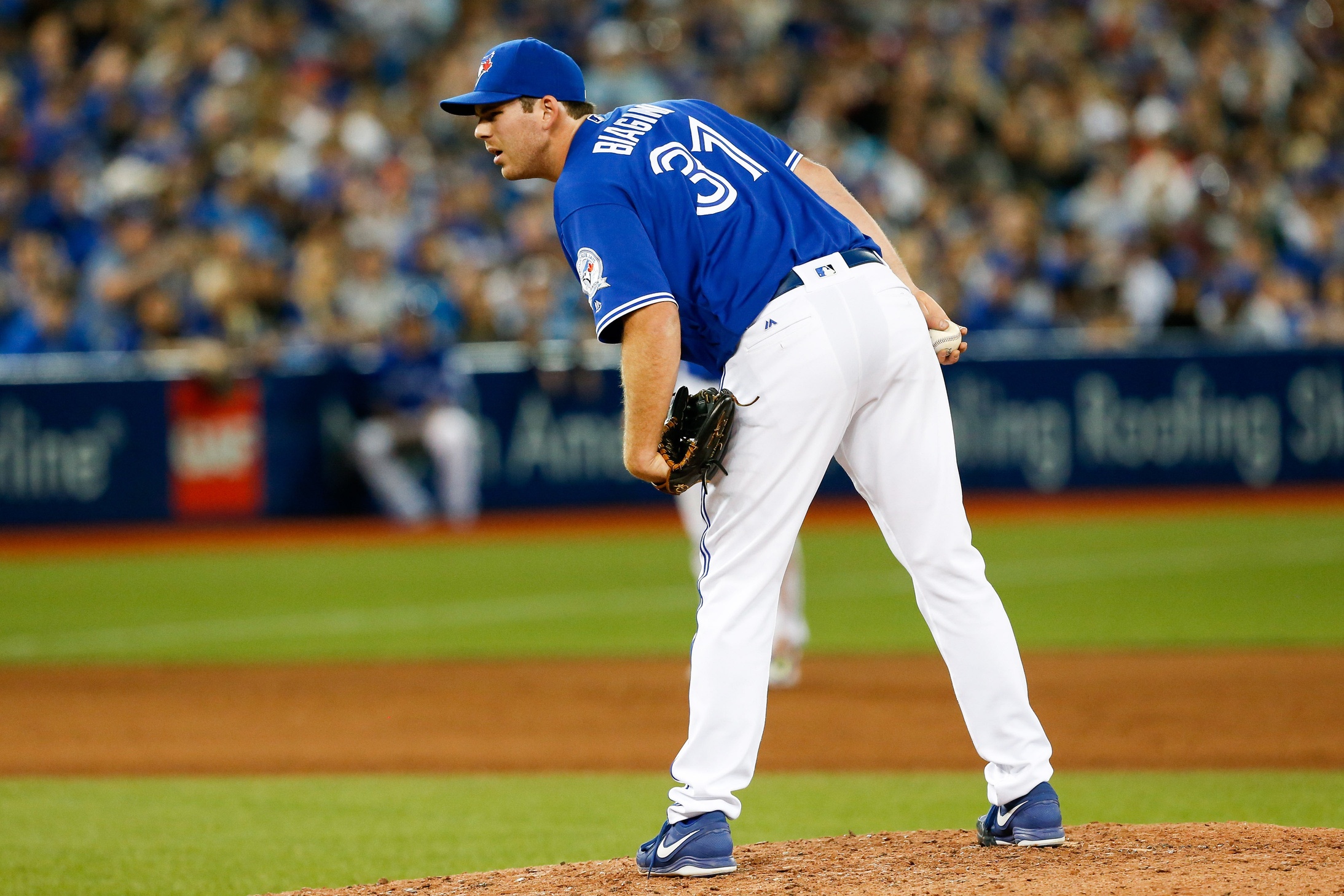

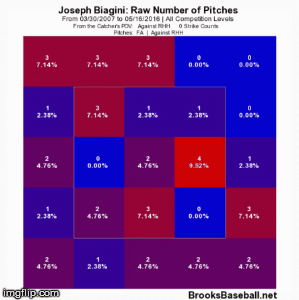
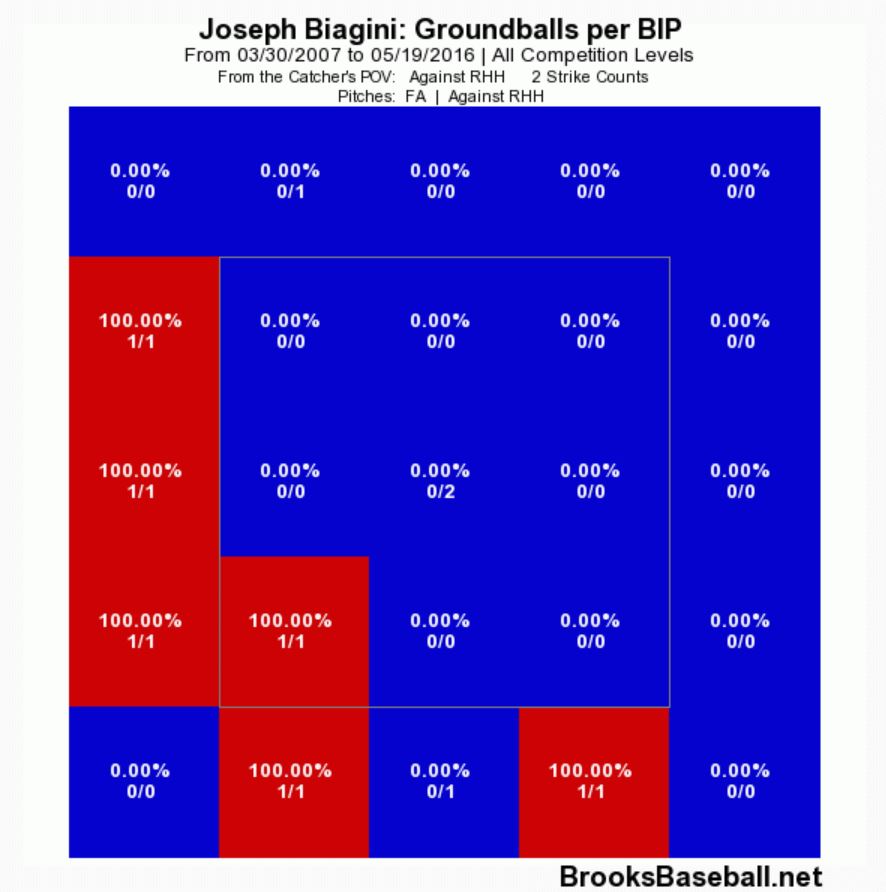
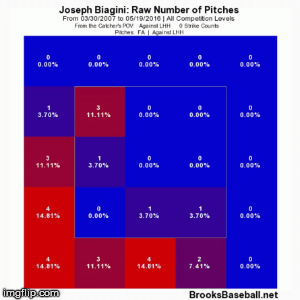
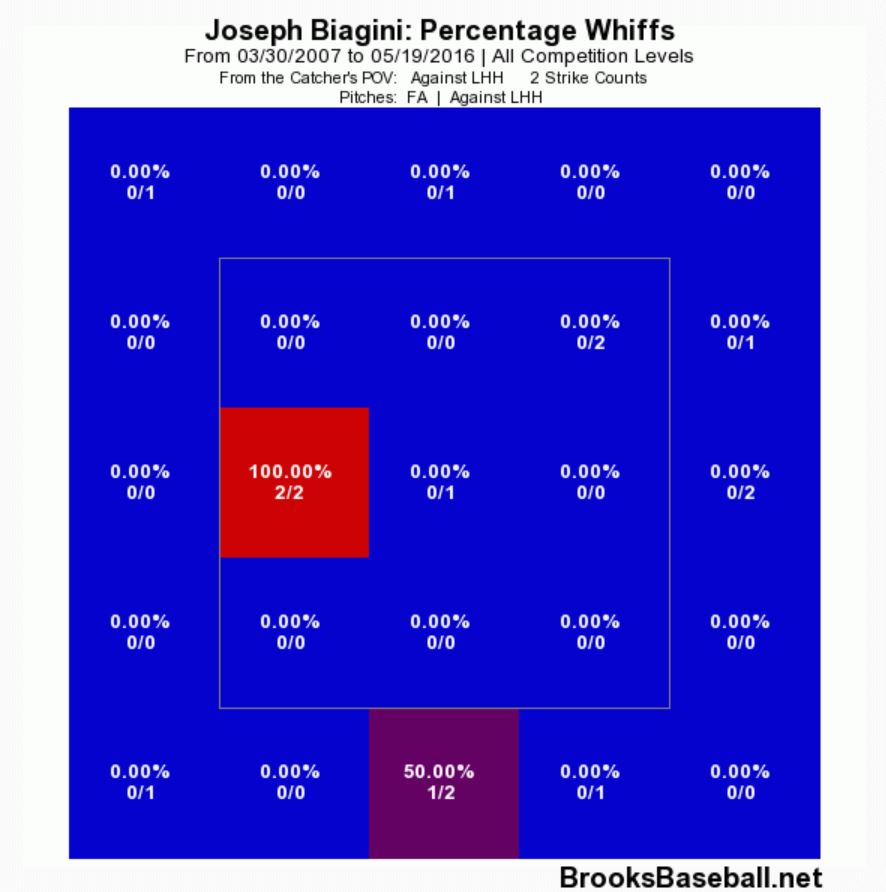
After seeing his MiLB K rates, I was surprised to see how much movement Biagini has on his fastball. The action on his curve also looks good. So it doesn’t seem out of the question that he’ll turn out to be a real Rule 5 find instead of a completely forgettable pick like the previous four listed, none of whom I’d have remembered without seeing their names.